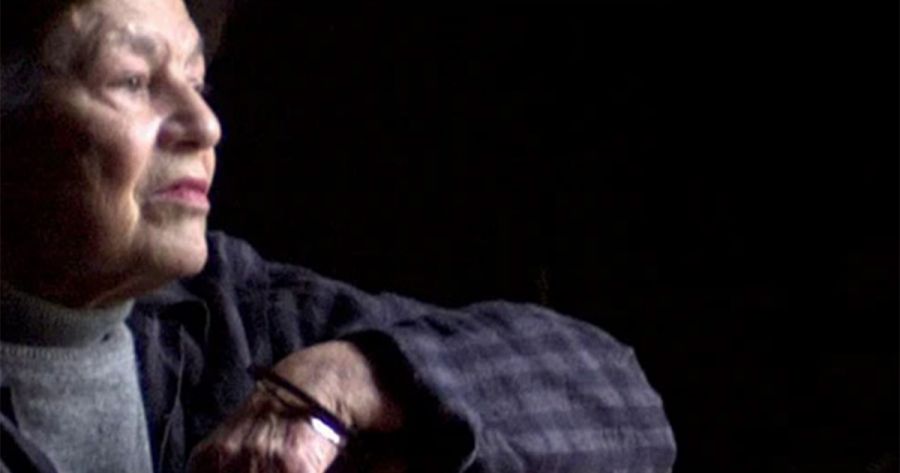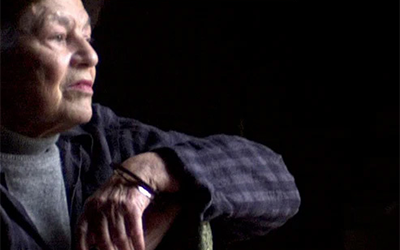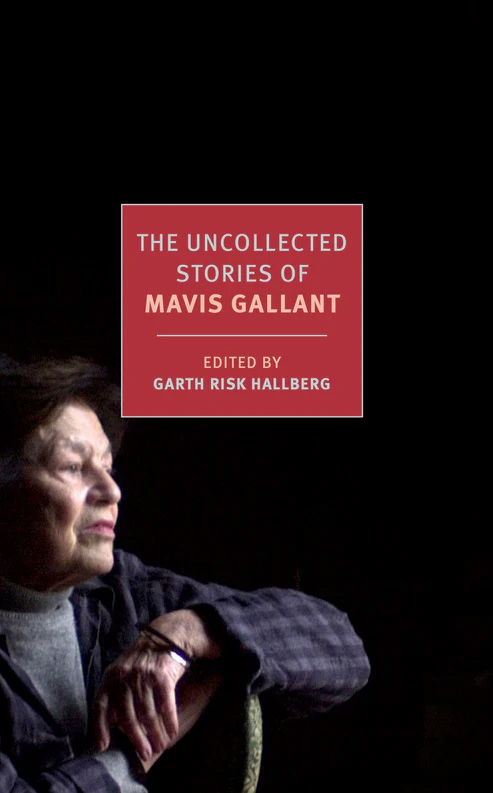
- Free Article: No
- Contents Category: Fiction
- Review Article: Yes
- Article Title: A writer’s writer’s writer
- Article Subtitle: Mavis Gallant’s neglected oeuvre
- Online Only: No
- Custom Highlight Text:
It always surprises me when I encounter someone so well read that they seem to have every obscure literary reference to hand and yet the late Canadian writer Mavis Gallant has managed entirely to escape not just their attention but their knowledge. ‘Who?’ they will ask. ‘How do you spell that?’ Offer them titles of collections and stories and their perplexity only deepens. The Uncollected Stories of Mavis Gallant, edited by American novelist Garth Risk Hallberg and published by New York Review Books, both tries to explain that underappreciation and to ensure that every serious reader knows precisely why one might wish to spend time in Gallant’s idiosyncratic and determinedly realist house of fiction.
- Featured Image (400px * 250px):

- Alt Tag (Featured Image): Patrick Flanery reviews ‘The Uncollected Stories of Mavis Gallant’ by Mavis Gallant and edited by Garth Risk Hallberg
- Book 1 Title: The Uncollected Stories of Mavis Gallant
- Book 1 Biblio: New York Review Books, US$22.95 pb, 621 pp
- Book 1 Cover Small (400 x 600):

- Book 1 Cover (800 x 1200):

- Book 1 Readings Link: https://www.readings.com.au/product/9781681378749/the-uncollected-stories-of-mavis-gallant--mavis-gallant--2024--9781681378749#rac:jokjjzr6ly9m
I crossed paths with Gallant’s landmark collection The Pegnitz Junction (1973) more than twenty years ago, around the time the NYRB’s publishing arm began its Gallant project in its Classic series with the essential volumes Paris Stories (2002) and Varieties of Exile (2003). There followed The Cost of Living: Early and uncollected stories (2009) and an omnibus of her two novels, A Fairly Good Time and Green Water, Green Sky (2016). These are now joined by Hallberg’s excellent contribution to the list, which returns all of Gallant’s stories to print.
Reading The Pegnitz Junction as an American doctoral student in the United Kingdom, I experienced my own mild sense of cultural dislocation that hovered somewhere between temporary and the permanent state of expatriation that has become, as for so many of Gallant’s characters, an inescapable condition. Gallant’s stories offer a collective account of the effects of migration on the psyche that stands as both warning and consolation: the comparatively minor trauma of elective expatriation (which Gallant herself undertook) is a far less disruptive experience than the forced exile that imposes itself on some of her characters, and yet to choose to leave home may become a decision impossible to reverse.
I have long thought of Gallant as a battling, niche writer, and Hallberg’s introduction goes some way towards confirming this characterisation. It also presents the astonishing information that she was as frequently published and supported by The New Yorker as her omnipresent near contemporaries in the magazine, John Cheever and John Updike. Between 1951 and 1995, the magazine published more than one hundred of Gallant’s stories (she was born in 1922 and died in 2014). In that period, she was chiefly under the editorial protection of William Maxwell. Long a fiction editor at the magazine, Maxwell was as subtle a writer – and is now as underappreciated – as Gallant. Like her, and unlike Updike, Maxwell arguably belonged to the category of what Hallberg calls ‘that loneliest of creatures, a writer’s writer’s writer’ – in other words, a writer who enjoys the admiration of fellow writers while being plagued by commercial neglect and, certainly in the case of Gallant, by an insecurity of income that strays into the realm of outright poverty. For Deborah Treisman, the magazine’s current fiction editor, to be a writer’s writer’s writer (she said in conversation at the 2011 New Yorker Festival) is ‘the definition of obscurity’; it typically refers to someone ‘who lives at or below the poverty line’.
Such framing presents Gallant as the kind of jobbing writer who must submit to the churn to stay afloat, making a life from her work (and often making great work despite these pressures) while never rising to the career-transforming heights of major prize adulation bestowed on the few. Notwithstanding the support of The New Yorker, Gallant was so far from being commercial that to court discussions of sales and print runs would be risible.
Nonetheless, there is a tension involving the language in which Gallant worked and the literary marketplace that has come to dominate literary production in the anglophone world over the past century. It seems plausible that a writer of Gallant’s talent might have had a very different kind of career had she been writing in French, not least because she was from 1950 based in Paris (where much of her finest work is set), and would perhaps have been less driven, even by the likes of Maxwell, to keep the marketplace as centrally in mind as Hallberg’s introduction suggests she did (he characterises her publishing history as both ‘mercenary’ and ‘haphazard’). That is not to say that Gallant was uncelebrated in her life, but as a writer working predominantly in the short story form, the range of top-tier prizes available was limited. Fellow Canadian short story devotee Alice Munro, a decade younger, pipped Gallant to the Nobel in 2013, a year before Gallant’s death, with a body of work no more accomplished although significantly more celebrated.
Time is a defining preoccupation of Gallant’s work, and her unnerving stories are best visited for a night here and there, dipping in and out so that the narrative density of each has the chance to develop its particular effects on the mind of the reader without becoming indistinguishable from its neighbours. To submit oneself to a Mavis Gallant story demands being flung forwards and backwards in time, discovering information about characters in a radically nonlinear way. It also requires allowing oneself to be reminded that even odious people (as many of Gallant’s characters prove to be) have much to tell us about humanity and can act as way markers in the stories’ navigation of moral hazards. This kind of ethical effect is usually muted or submerged, so that we encounter Jean Duncan, the outwardly ‘good’ narrator of a novella like ‘Its Image on the Mirror’ (1964, and included in The Uncollected Stories) only to find that she is, in the end, contorted by various forms of bias: anti-Semitic, anti-refugee, anti-Catholic, homophobic, classist, etc. Jean’s accounts of her bohemian sister Isobel’s life (spanning decades from before World War II to the middle of the century) is marked by moments of breathtaking and obsessive resentment, as when she fantasises about her sister’s death:
I knew that Isobel’s death would end the problem of my sister forever, and that if she died I had every reason to live. Her death would remove the ungovernable daughter for my parents … Dead-and-buried Isobel, under a heap of snow, or a rectangle of grass, would be harmless Isobel, the pretty Duncan sister, taken too soon to her Maker. We cried, all of us, when we thought she was lost. We spoke of feelings for her and for each other we have certainly never mentioned since: and then Isobel recovered, and left us all looking like fools.
In this world, the quotidian becomes monumental, so that details of dress (‘a green and white cotton frock and open sandals’, ‘a straw bag’, Isobel’s lack of hat or ‘stockings’) are critical aspects of Gallant’s mode of characterisation, operating as signifiers of Isobel’s attitude to social expectations – an attitude that provokes her mother’s despair and Jean’s disdain. ‘No people are ever as divided as those of the same blood,’ Jean later concludes, in a moment of spiralling retrospective narration that repeatedly turns back to the past as it informs our understanding of Jean’s present. (Hallberg is not wrong to describe as Proustian Gallant’s approach to narrative structure in one sequence of related and autofictional stories.)
Hallberg has elected to arrange the stories according to their geographic setting, so we have stories of North America, of Southern Europe, and of ‘Paris and Beyond’. In the last of these, ‘Dédé (1987) and ‘The Assembly’ (1985) also the two latest stories in the collection, Gallant offers depictions of a faded French bourgeoisie grappling with its insecurities and racial prejudices in the face of the country’s changing demographics as members of the wider Francophone world settle in the metropole. In ‘Dédé’, these anxieties hinge around the eponymous and cryptically homosexual uncle of the teenage protagonist, who, to his parents’ horror, announces that he also wishes to be a bachelor.
In ‘The Assembly’, the residents of a Paris apartment building gather to discuss a recent sexual assault and what actions they should take to increase their security. Once the facts of the case are established, including that the assailant was ‘French, fair, and blue-eyed’, they begin to imagine how a new ‘electronic code system’ might ‘keep peddlers out’. At this point, Gallant allows her characters to condemn themselves as their sense of vulnerability expands to the airing of explicitly racist paranoia. Only the aunt of the young woman assaulted offers a mild rebuke, reminding her neighbours that ‘all foreigners were not alike’. One knows by the end of this vital collection where Gallant’s sympathies lay, and why she remains precisely the kind of writer we must continue to read today.


Comments powered by CComment